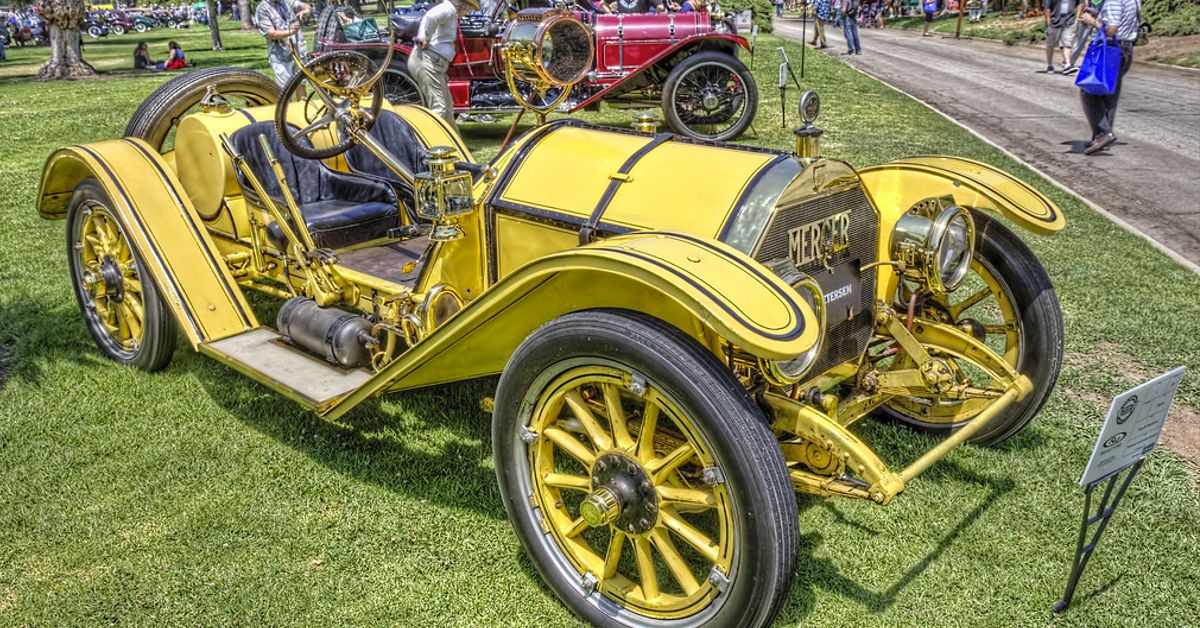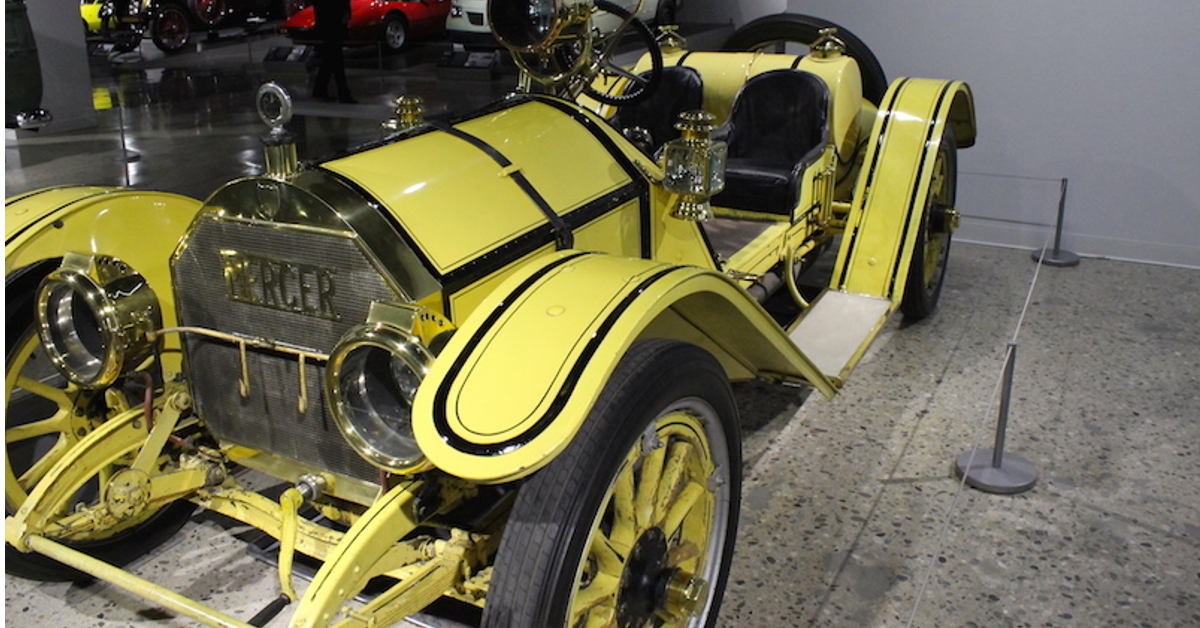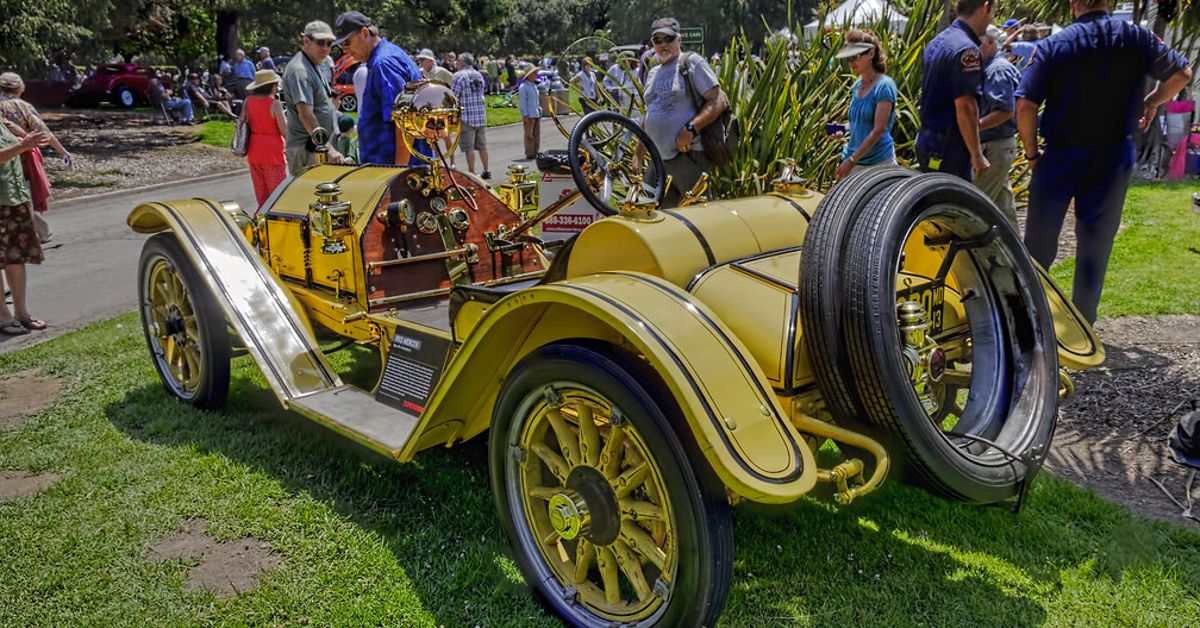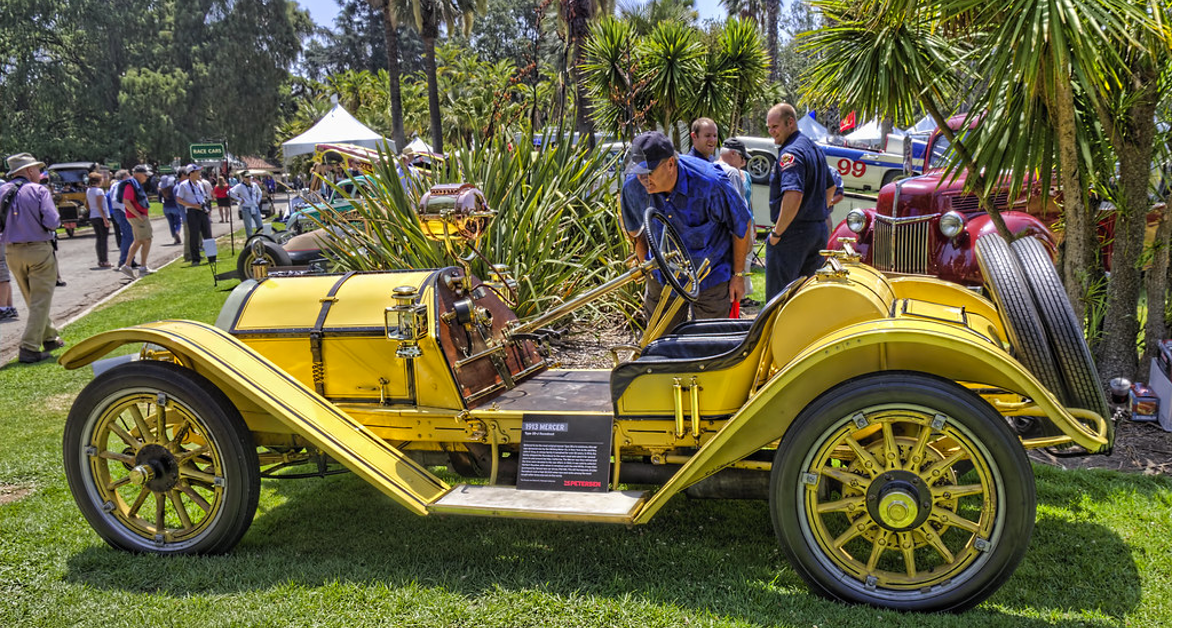The Mercer built vehicle was among the most admired American automobiles of the Brass Era, thanks to its well-balanced chassis and T-head four-cylinder engine, mounted on an aluminum crankcase. These were the contributions of the engineer Finley R. Porter who supplied the Mercer with sporting characteristics that pushed it to become one of the world’s fastest road cars of its era. Porter’s self-taught engineering skills were combined with Washington A. Roebling’s concept of a low-slung speedster. The minimalist vehicle was agile, had an impressive power-to-weight ratio, and proved extremely capable in competition. Many were driven off the showroom floor and to the racetrack where they often emerged victorious. It’s weightless experience and speedy reputation made it a well-sought-after vehicle of its time.
Just How Well Built Was The Mercer 35-J?
Throughout 1913, the Mercer Model 35 was available as a 2-person Raceabout (called the 35-J). This machine rested on a wheelbase that measured 108-inches. A four-person touring body style was available on the Model 35, as was a five-person version. Both body styles rested on a wheelbase that measured 118-inches. The spectacular 35-J Raceabout sold for a pricey $2600, over 100 years ago, back in 1913. Even though they were minimalist, their base price of $2600 made them unreachable for most of the general public. The Raceabout was never produced in mass quantities, nor were they considered as a practical car. They offered no protection against the weather; no desirable comforts and the ride was harsh. These were made to race and win.
70mph In 1913?
The 301 cubic-inch T-Head inline 4-cylinder engine used a single Fletcher carburetor that allowed it to produce 34 horsepower. They were backed by a four-speed manual transmission and rear-wheel drum brakes, which provided the stopping power. The suspension consisted of semi-elliptic leaf springs with Hartford Friction-Type shock absorbers. They had a ladder-frame with very little bodywork (only a hood and vestigial fenders). Despite this, they had a very distinguished bumblebee yellow coloring which made them stand out among other dull colored sporting motors of the time. Without a body, no starter pack, and a lack of amenities, these Speedsters weighed a mere 2300 pounds. They had a 25-gallon gas tank mounted directly behind the two seats. There was very little need to prepare them for racing; some owners added a monocle windshield to provide mild protection from the elements and harsh roadways of the era. It’s hard to imagine that this was a very advanced vehicle for its day, but it was. Mercer Raceabout was classed as America’s first sports car. At the time, the car was guaranteed to reach 70 mph, when very few people had ever endeavored over 50 mph.
The Evolution Of The Mercer 35-J Raceabout
The Raceabouts earliest known owner is Frank Miller of Glendale, Ohio, who had acquired it by 1951. The Antique Automobile Club of America listed it in his ownership in their 1954, 1961, and 1968 rosters – importantly, referencing the 35-Js body and the current chassis and engine numbers. Many of the tour badges present on the dashboard to this day were accumulated under the ownership of Mr. Miller, including participation in no fewer than six Glidden Tours. This was indeed one of those Mercers upon which the modern antique automobile hobby was founded.
As mentioned, the Mercer was lightly freshened in prior ownership, much of the paintwork and interior remains from its original restoration, and is holding up remarkably well for its age, testament to the quality of the workmanship. The body, hood, and fenders are all believed to retain their original sheet metal. The car is still fitted with correct Mercer headlamps – although they were long ago modified to be electric, and under the hood, the original Fletcher carburetor, missing even on some of the best surviving cars, remains happily in place. Proving its status as a "runner," the car won its class at the 2005 Newport Hill Climb in Indiana. A Bonhams specialist had the pleasure to drive the car and found it to be a swift and exciting machine, winding up to speed with ease and cornering with enjoyment. One of the few documented relatively recently selling’s of the 1913 Mercer Type 35-J Raceabout was back in 1999 where the iconic motor sold for a whopping $926,500.
Offering one of the most truly remarkable driving experiences of the Brass Era, the 35-J model is among the most exciting offerings of the early 20th century. It has been beloved by only a handful of enthusiasts in the last 12 decades. After having been restored to its full beauty, it awaits a world of touring and showing opportunities.
Source: Bonhams, RMV, Simeon Museum, Rivivaler, Concept Carz




